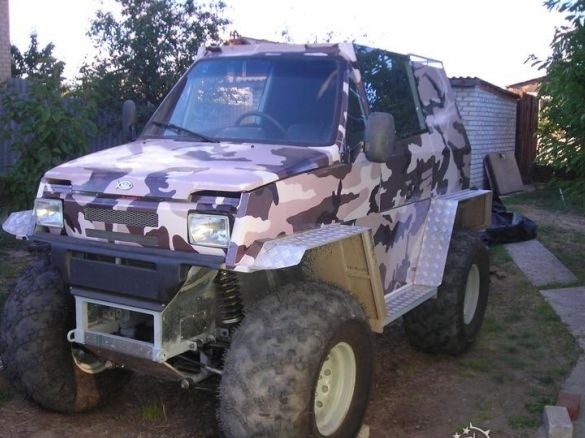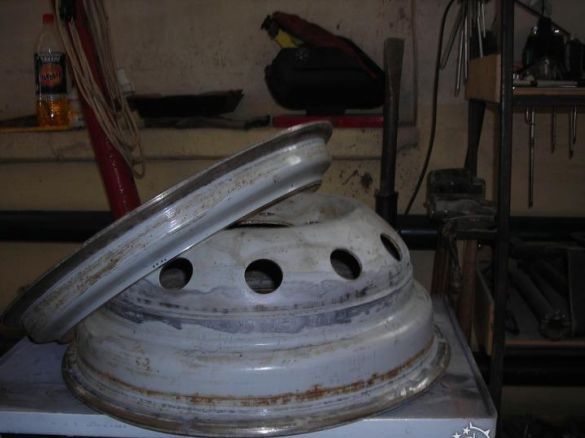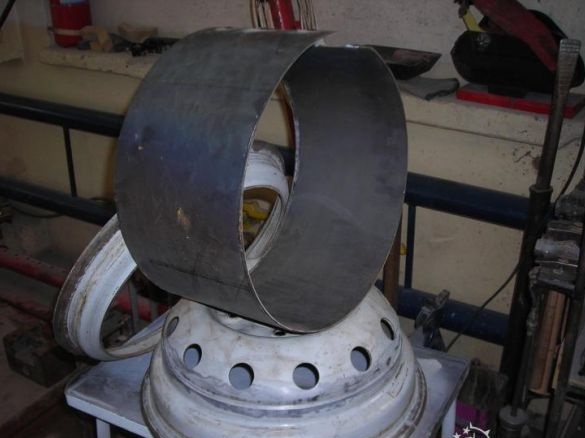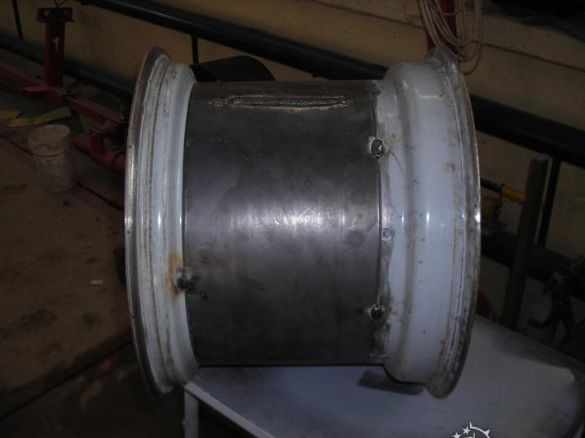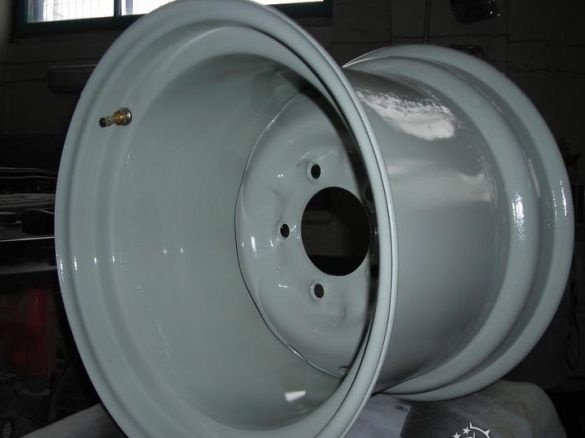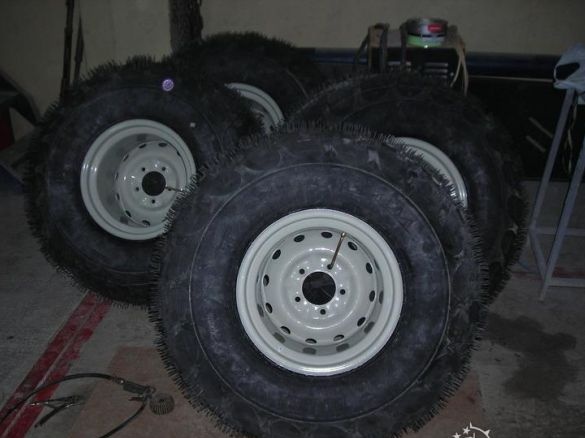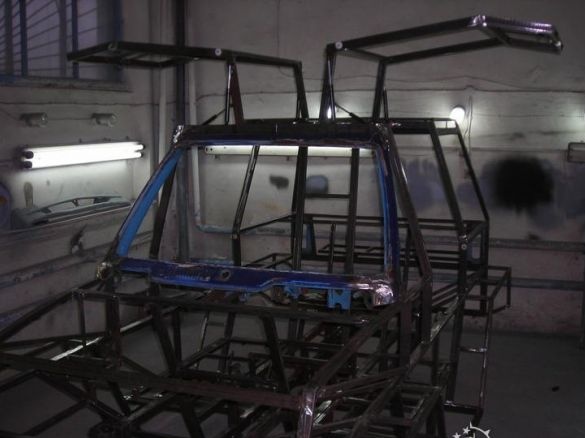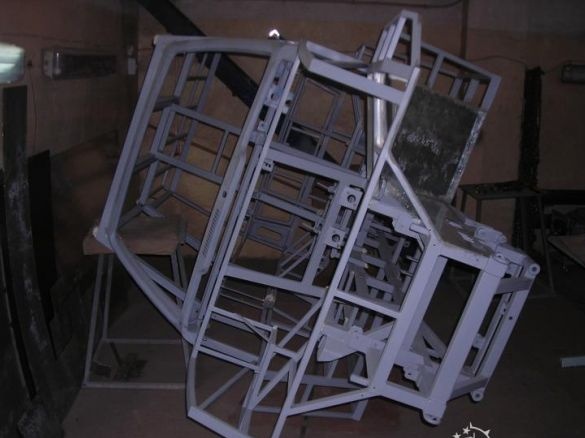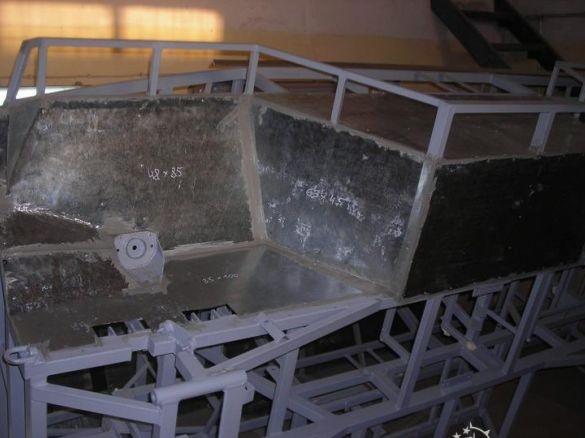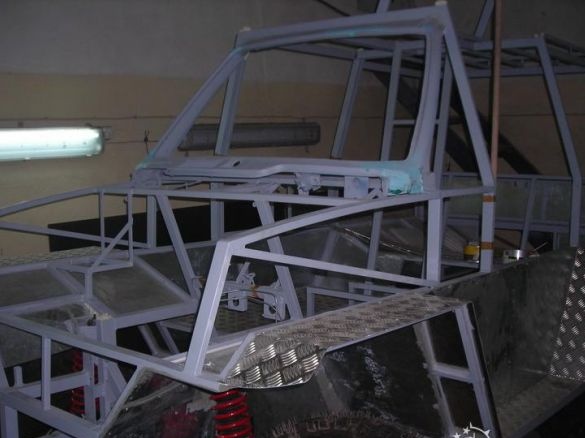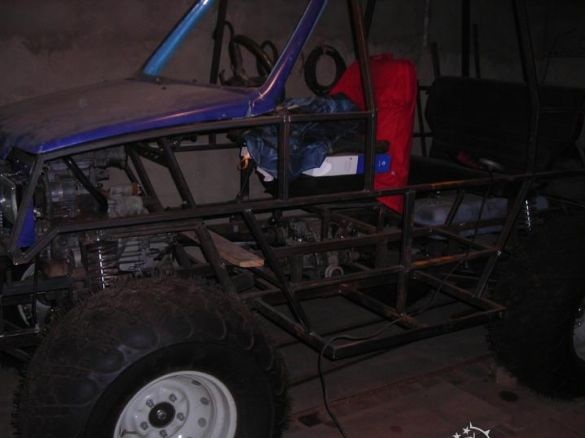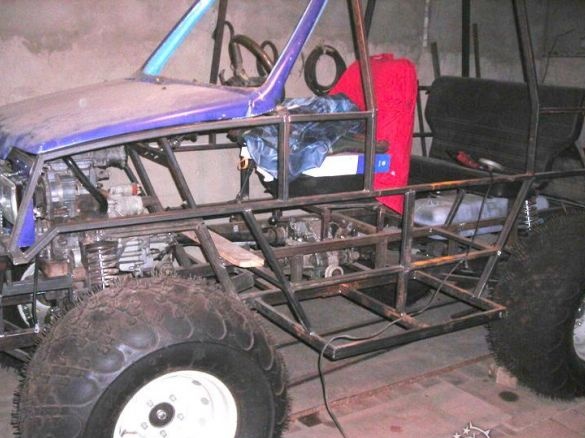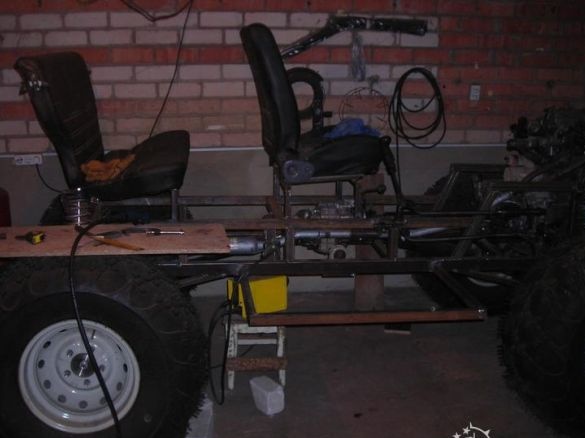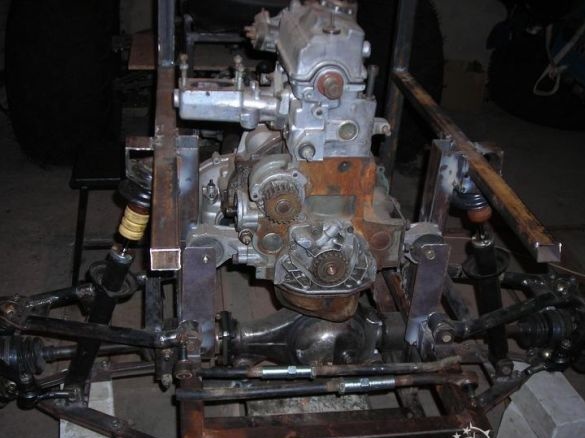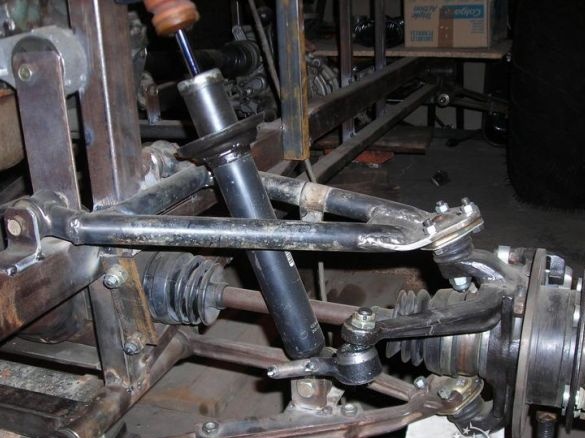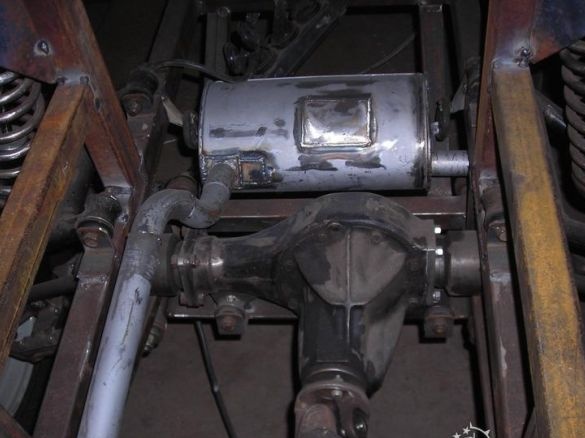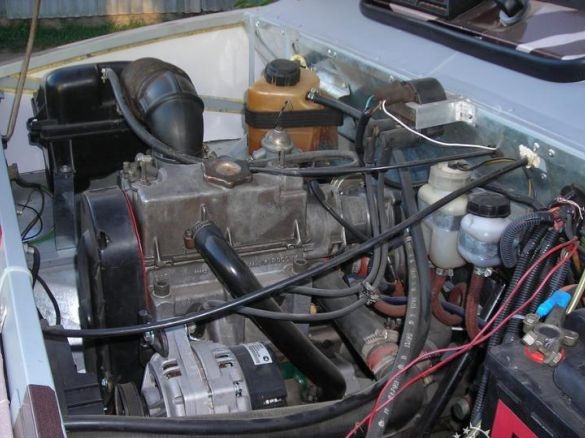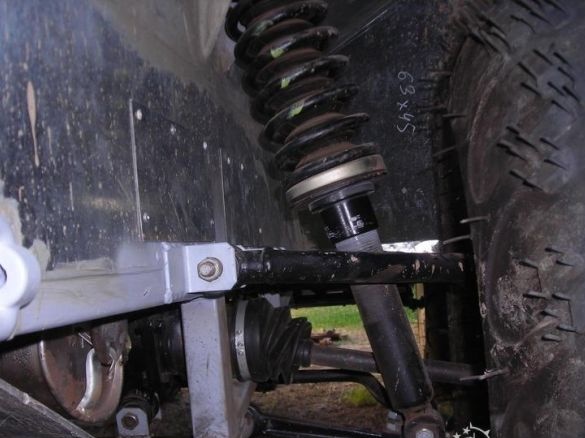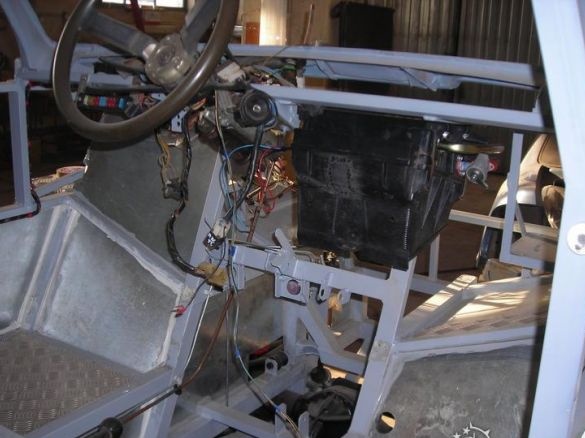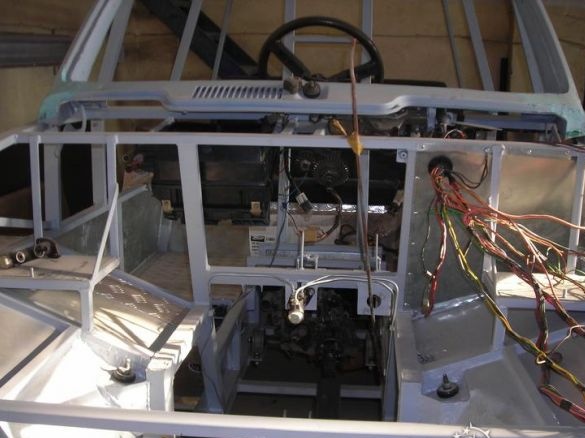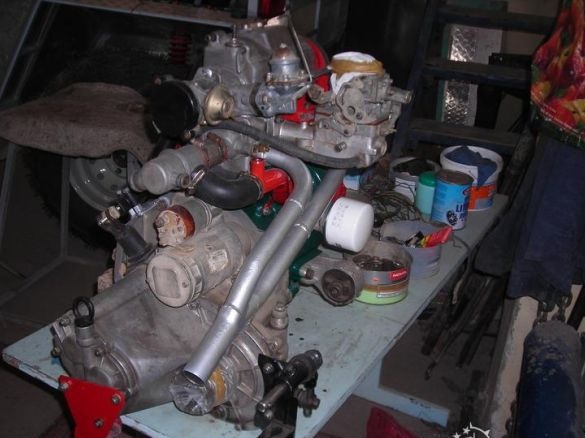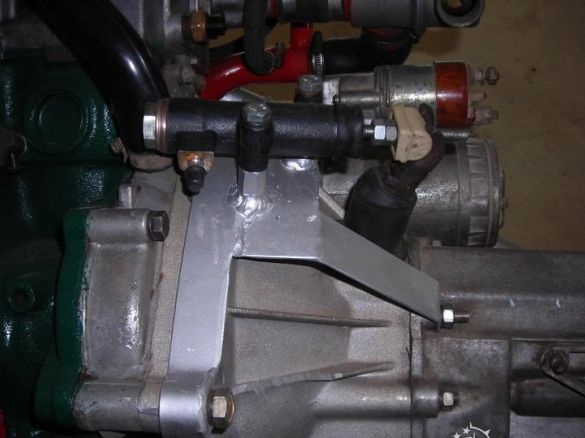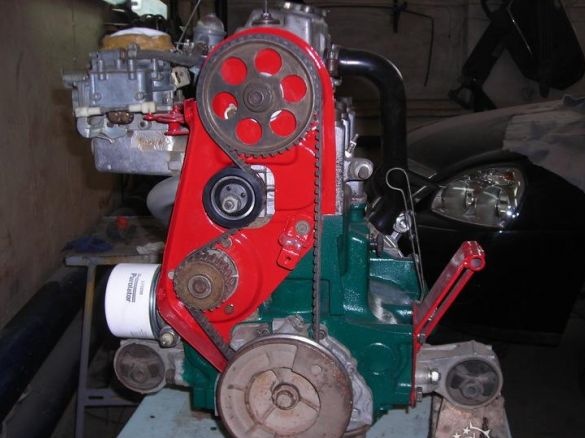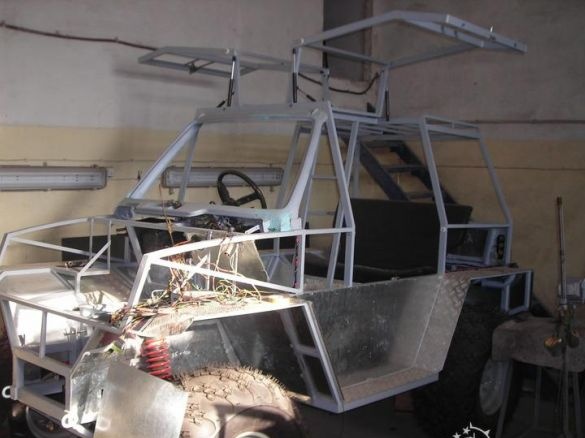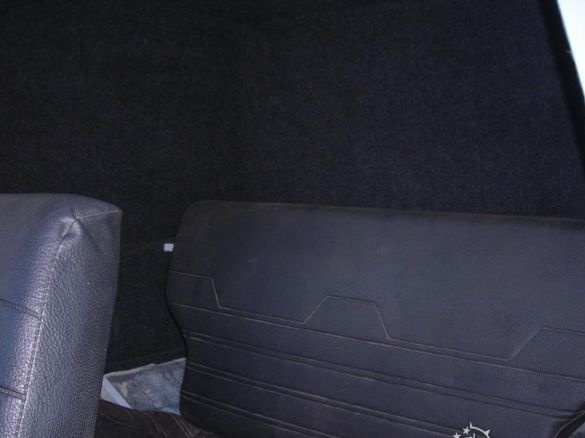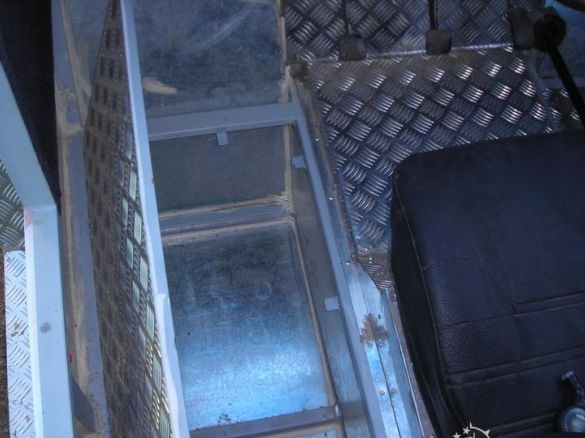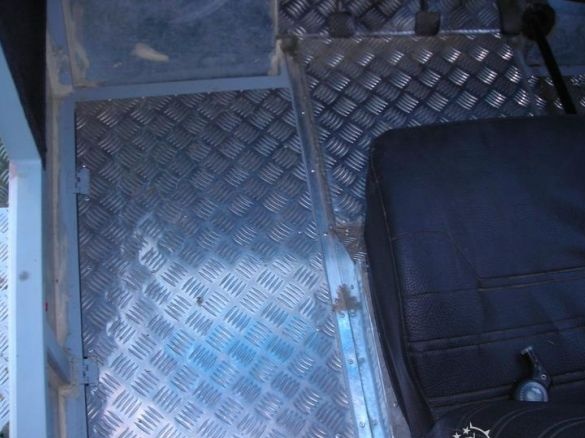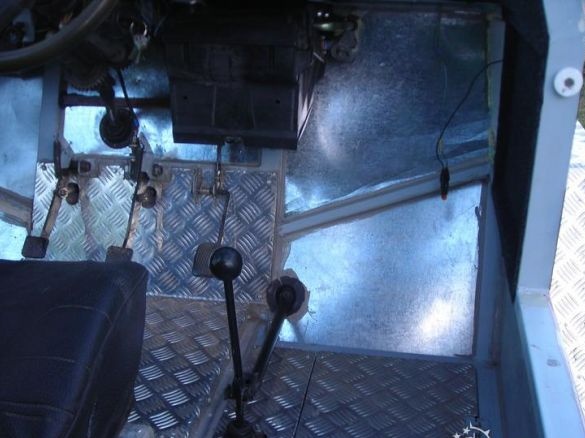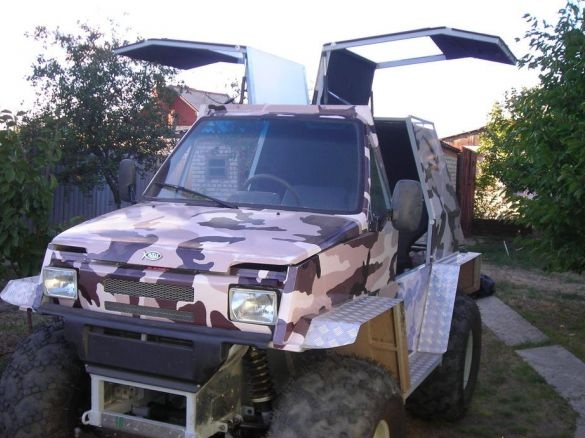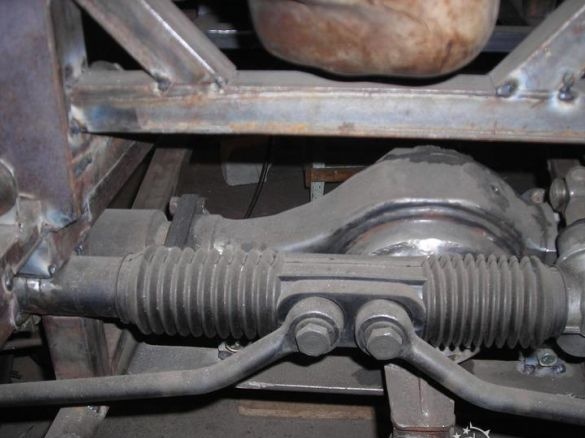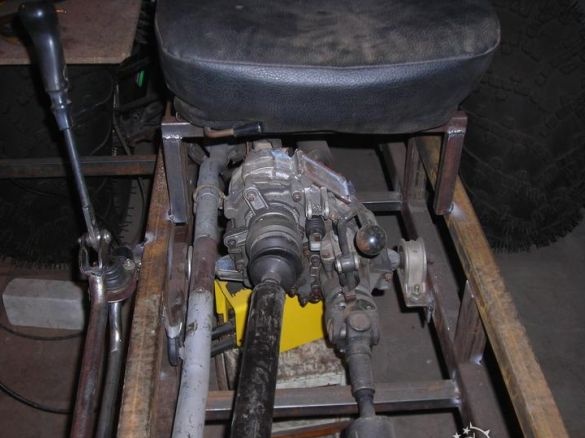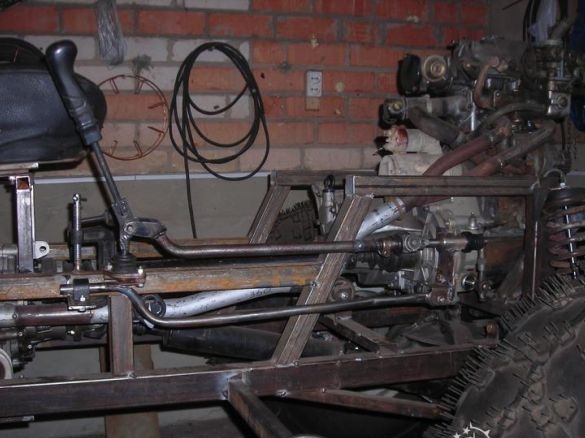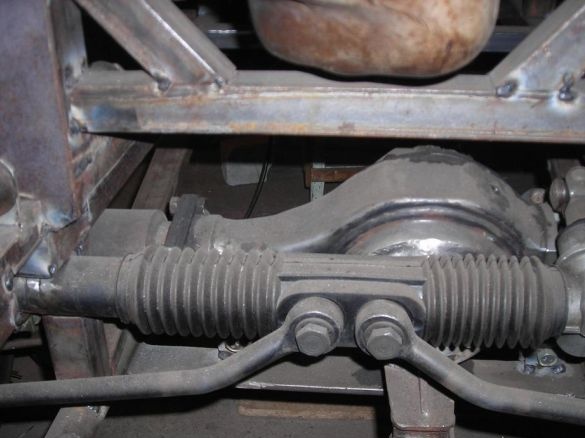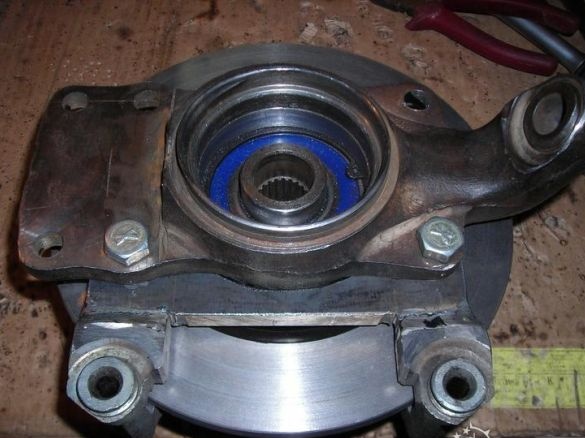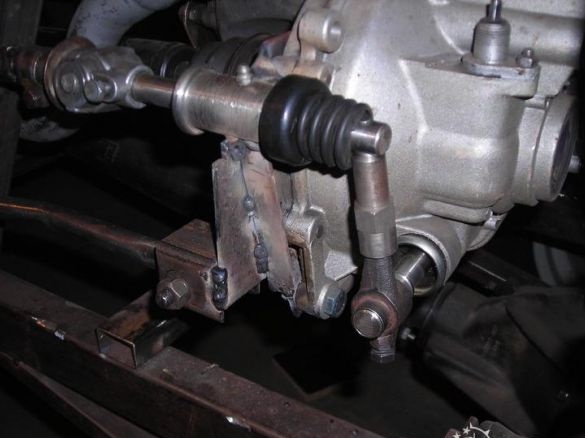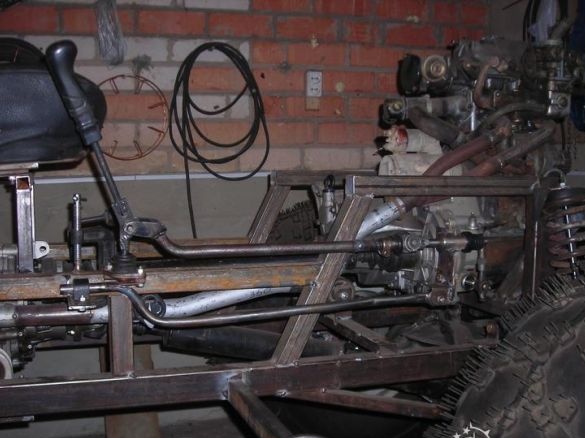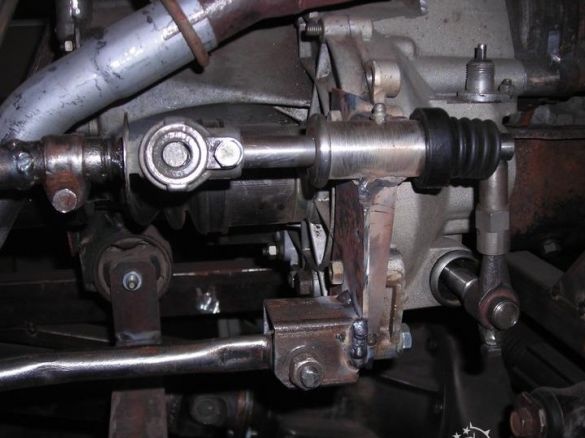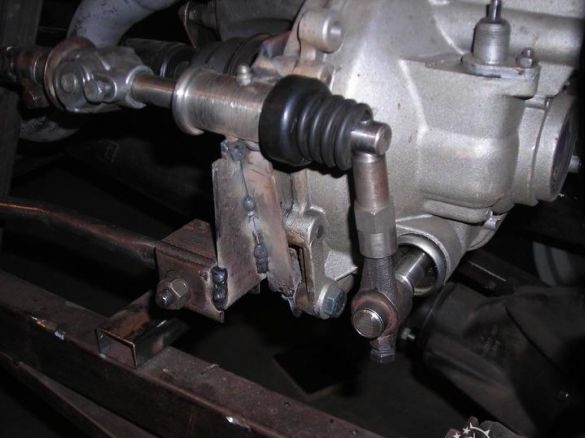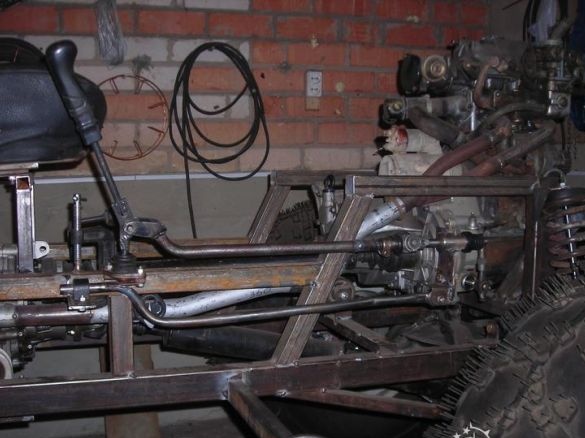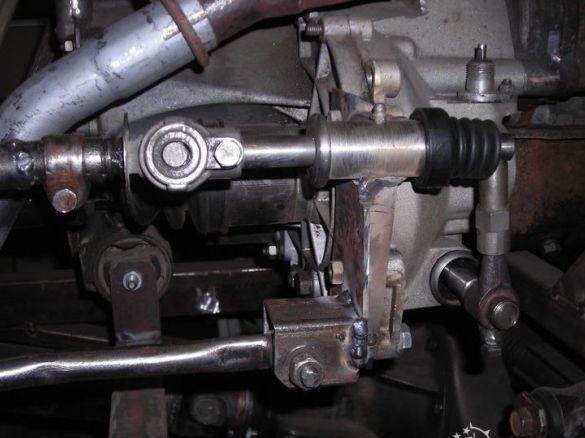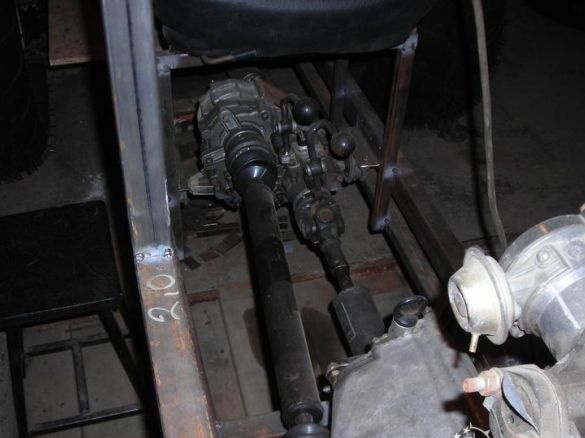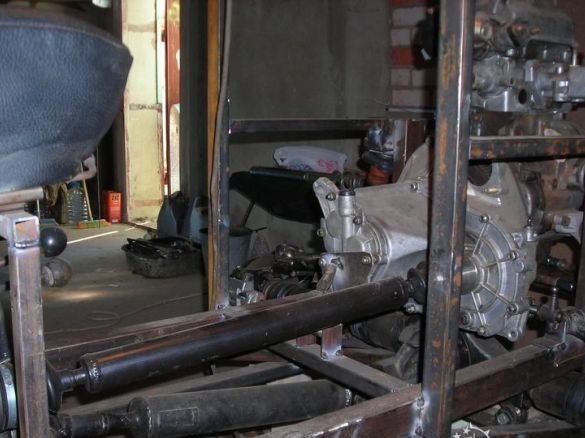The all-terrain vehicle is a kind of hybrid based on the car of the Oka and Niva. The author decided to make a reliable all-terrain vehicle with increased cross-country ability and sufficient capacity to carry several passengers, as well as equipment and supplies. The all-terrain vehicle turned out with the following parameters: the height is 210 cm, the length is about three meters, the width along the edges of the wheels is 190 cm.
Materials, mechanisms, tools and details used by the author to create this model of a hybrid all-terrain vehicle:
1) Engine from Oka car
2) Transfer box from the car Niva
3) metal gearboxes from classic AvtoVAZ
4) CV joints from the cornfield
5) air duct from the 31st Volga
6) corrugation also from gas 31
7) the steering knuckle from the cornfield
8) the hub from the Niva
9) double row bearing
10) gearbox from the car Oka
11) pipe with a diameter of 40
12) bridges from UAZ
13) tires Shain
As well as many other less significant details.
Consider the specifics and main points and difficulties of creating this all-terrain vehicle, which the author encountered.
Wheel assembly for an all-terrain vehicle:
The all-terrain vehicle frame was made:
Wheels installed:
And the seats:
An engine and a gearbox from Oka and Nivovskaya transfer case were installed on the all-terrain vehicle frame. In order to combine this into a single mechanism, the author used metal gearboxes from classic AvtoVAZ cars, which he remade under SHRUS from the same Niva. As a result, the gear ratio turned out 4.1. Since the operation of the all-terrain vehicle offers difficult off-road conditions, the author decided to make an independent suspension of the front and rear axles.
The gas duct 31 was also installed, which the author purchased in the rubber shop of his city.
Further, the author began work on preparing the design of the all-terrain vehicle for the installation of Shain brand wheels. For these purposes, the Nivov steering knuckle was shortened, which allowed him to get inside the wheel disc. Also, the author decided to grind the hubs and fists under the double-row bearing.
Quite interestingly, the author approached the creation of a shaft from the gearbox drive to the transfer case: a pipe with a diameter of 40, 3.5 CV joints was used on the Oka gearbox, and then on the transfer case from Niva.
The gear shift was fully borrowed from Oka.
The author decided to install the driver’s seat in the center of the car, so the gear lever is almost straight and gear shifting is easier. The only minus of this arrangement is that the gear changes in the reverse order from the usual on the Oka. The option with a steering rack from the VAZ 2108 was also considered, it is not expensive and maintainable.
Due to the fact that the driver’s seat is in the center, a lot of space has been freed up for various compartments, and the rear seat has a standard seat for two passengers. Initially, the author planned to attach a body from Oka to this frame, but this venture did not pay off. In winter, in felt boots and a jacket, getting into a similar body, and even with the driver's seat in the middle, is quite problematic. Therefore, another scheme was applied, which allows you to get into the car at full height and does not constrain movements.
Sheathing metal sheets of an all-terrain vehicle frame:
Doors of a special design were also installed.
Other photos of the all-terrain vehicle construction:
In some photos of the construction of the all-terrain vehicle, you can notice the shortcomings of the mechanism of the backstage of the gear selection, which is located inside the gearbox from Oka. There were also shortcomings in steering, which caused breaking and steering, which when using the tires of Shain, quite critically affects the driving style and the integrity of the design of the all-terrain vehicle. But since most of the technological solutions were initially made on tack, this allowed to refine the design of the all-terrain vehicle and remove significant shortcomings.
In particular, the author, instead of altering the steering knuckles, considered the option of installing bridges from the UAZ, since the front suspension of the Niva, in combination with the beam, does not differ much in weight, and loses to the bridge from UAZ in reliability.
Instead of a flimsy corner, four segments were installed on the upper arm, tightened by bolts, which are difficult to bend and will help strengthen the all-terrain vehicle design.
As a result, when the author completed the main improvements to the all-terrain vehicle, he proceeded to full-scale tests, which showed all the strengths and weaknesses of this car. During the tests, excellent cross-country ability in the snow was noted, to which Oise and Niva are very far away. The engine from the Oka completely copes with its duties, if there is no goal of a quick ride or long trips. The author successfully moves away from the second gear, after which, in the fourth all-terrain vehicle, he confidently overcomes any obstacles. Maximum speed, as already noted, is not a strong point of this all-terrain vehicle model, yet 40 km / h for the engine at 4000 rpm is not enough. Therefore, the author plans to replace the engine from the Oka in the future with something more powerful and reliable, but so far has decided to use it before some kind of critical failure. Basically, the author’s fears are based on the fact that he is an avid fisherman, and loves to go fishing as much as 100 kilometers from the house, and such long trips cannot but affect the low-powered engine from Oka.
In principle, the author plans to remove the transfer case after replacing the engine, thanks to this decision, he wants to achieve both traction and speed for the all-terrain vehicle. The author also notes the excellent cross-country ability provided by the Shain's wheels.
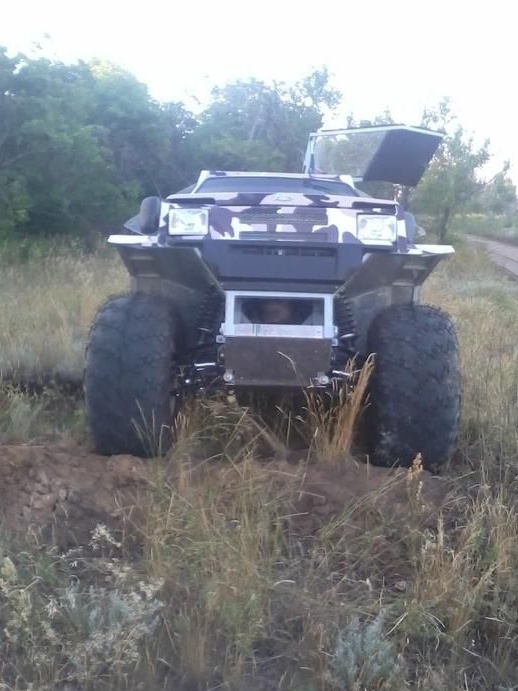
The author of this all-terrain vehicle "KENT" from the city of Kamyshin in the Volgograd region.

